
FOR years, one of my ambitions has been to visit Cincinnati. Not for the strange chili or to take in a Reds or Bengals game. It was to visit Todd Swormstedt’s American Sign Museum. At 67, time’s a-wastin’ and I’ll have to see about Cincy sometime soon; but I have something to tide me over in a ramshackle building by the East New York LIRR platform, as Noble Signs operates the New York Sign Museum on the second floor of the building, #2465 Atlantic Avenue at Van Sinderen, which appears to have been constructed when steam trains ran at grade along Atlantic Avenue. I was visiting on Open House New York weekend, when many locales ordinarily closed to the public open up. Formerly, when I was younger and spryer, I made several stops on said weekend and chronicled them in FNY. (After 25 years, if all of FNY were printed, it would probably be encyclopaedic in length.) The Sign Museum is open by appointment only at present: email nysignmuseum@gmail.com.
In contrast to the American Sign Museum, which specializes in neon, Noble Signs/NY Sign Museum restores and displays a good deal of handpainted signs and takes pains to mention it doesn’t use precut fonts, instead developing its own original fonts. However, neon signs aren’t shorted; I noticed the old Queen Restaurant neon sign, which made its way here after the Court Street restaurant’s closure.
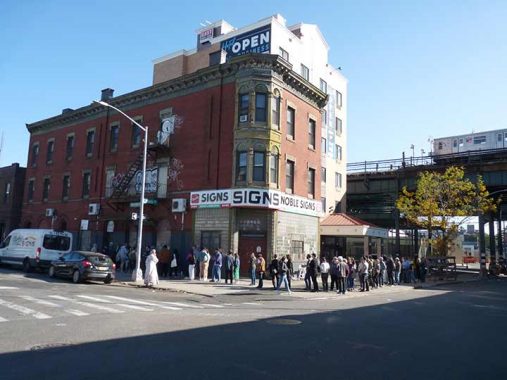
At 11 AM a line had formed to get in, as the museum was open only until 1 PM. Still, we have had unrelenting pleasant weather this October and rain wasn’t an issue as it has been for many OHNY weekends in the past.

In this photo, note the sign for “Apex Airtronics.” I knew this building long before the Sign Museum took it over because whenever I rode the LIRR to Jamaica and it stopped at East New York, I saw this sign above the door. It was a military components manufacturer. It was still in business from about 1960-2010.
When the Apex Airtronics sign was removed a glass block earlier sign for Lillian Dress Co. was revealed underneath, and can still be seen on the exterior.
Mikel’s Shoes was at #499 DeKalb Avenue in Fort Greene until about 2017. In 2024, another distinctive sign for Keily Barber Shop could be found there.

As noted above, this is a dual-purpose establishment. Let me quote from the brochure presented when I arrived…
Founded in 2013, Noble Signs is a sign shop and creative studio. Our full-service design & build facility works with businesses to craft unique identities rooted in appreciation of New York City’s vanishing classic signage.
We utilize all materials and classic sign types, from handpainted and neon to gold leaf and more. Our process starts with the pencil and we bring our knowledge of hand-lettering to every design product. No job is too big for our skilled team of artists, designers and fabricators.
The New York Sign Museum is a 501(c)(3) nonprofit foundation dedicated to preserving the history of advertising and signage in the NY metro area. In addition to salvaging as many of our city’s classic signs as possible, our goal is to provide an archive for designers, historians, and educators to draw from, and give sign lovers everywhere a chance to discover the story and vernacular style of our local signage traditions.
Related: the work of Vernacular Typography; I hadn’t checked the site in some time, and it sadly seems to have lapsed.
What follows is a sampler of the works seen at Noble Signs where sign heaven is attainable…

It’s sometimes hard to differentiate between classic signs Noble has restored, and newer signs that the sign shop has created. For example, the “S” used is recognizable in a number of the signs found here.
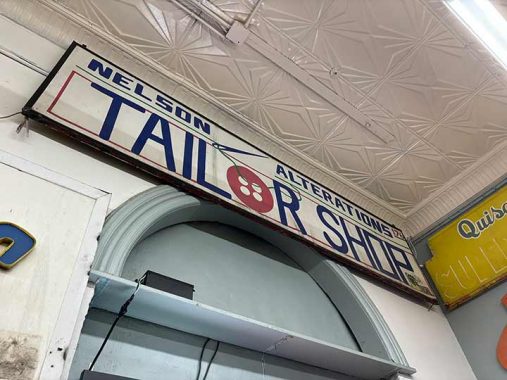
Some, though seem to clearly be older signs that have been archived.

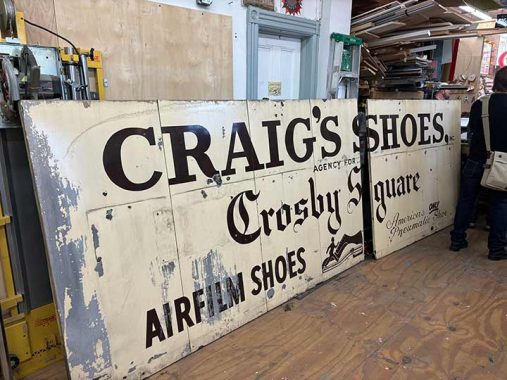
Till recently this sign could be found at #114 Chambers Street and was part of a now-vanished “shoe district” in the City Hall area.
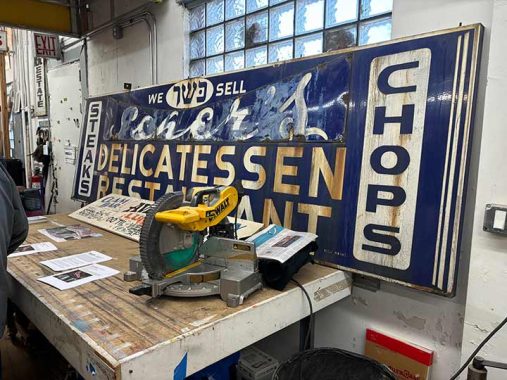
Scher’s Delicatessen, originally Forest Hills, Queens
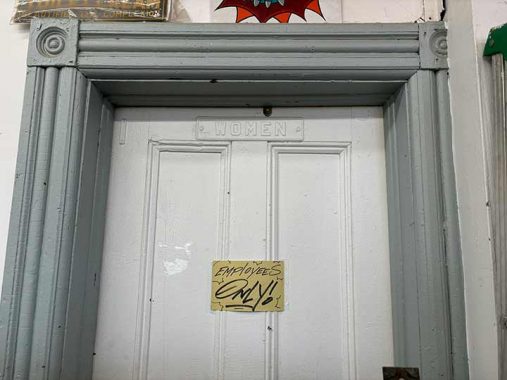
The Sign Museum has even preserved this sign unintentionally. Don’t see it? Look carefully above the door for a small plaque: “WOMEN.”

These are all new signs created by Noble.
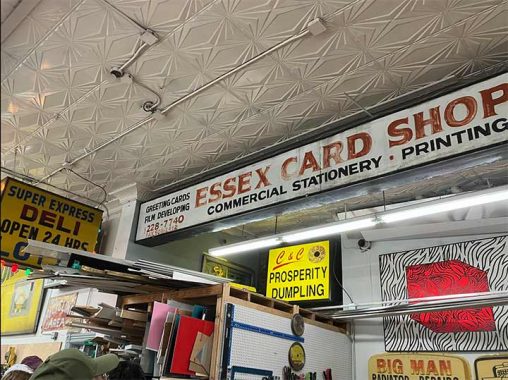
When the Essex Card shop moved from its longtime location at #39 Avenue A in the East Village after a 2022 fire to #47 Avenue A a few doors over, its old sidewalk sign was acquired by the Sign Museum.
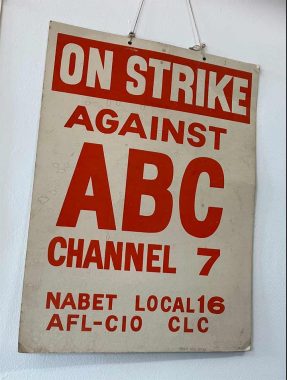
Workers at ABC-TV struck in the 1960s (the TV reporters were in a different union and remained on air); this was one of the sandwich signs used by picketers.

This illuminated sign hung at the recently shuttered Mayday Hardware, at #755 Washington Avenue near Sterling Place in Prospect Heights. I hope the Museum was also able to acquire its incredible black and gold sidewalk sign.
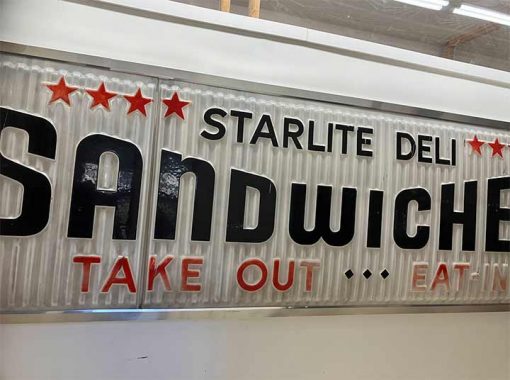
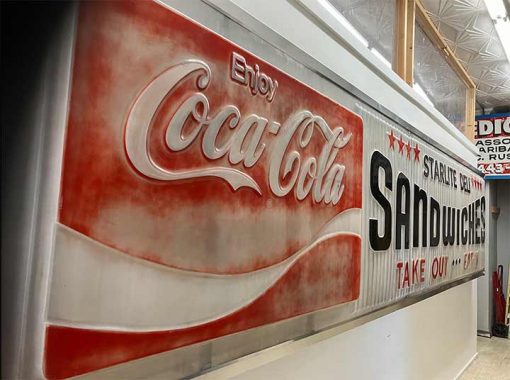
When I covered West 44th Street in FNY a few years ago I passed the Starlite Deli but didn’t notice its sign because it was hidden underneath a sidewalk shed. Unfortunately it recently closed after a 40-year run but the Sign Museum acquired its classic illuminated sign.
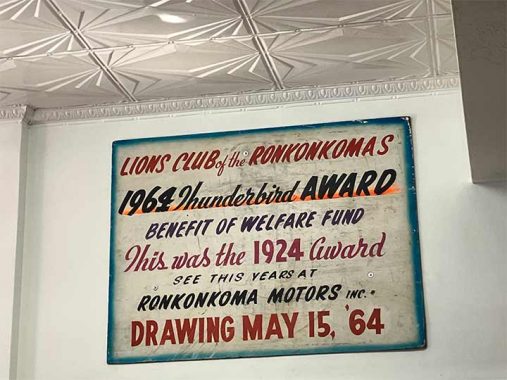
1964 handlettered sign, Lions Club of Ronkonkoma
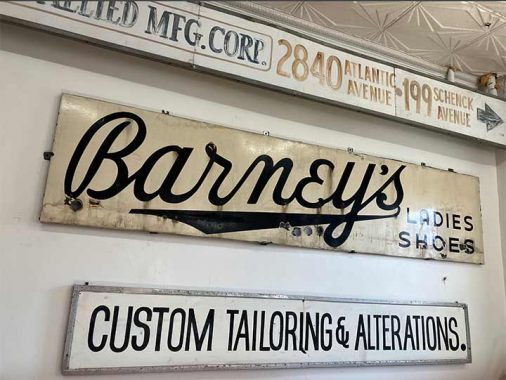
I’m unsure if this sign for Barney’s Ladies Shoes had anything to do with the former famed Barneys clothier on 7th Avenue and West 16th in Chelsea.
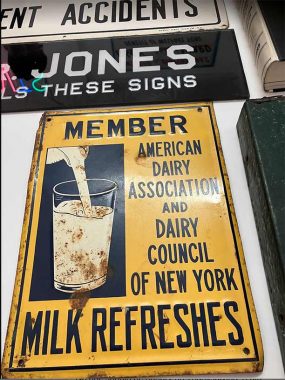
Dietitians and scientists vacillate on whether milk is, in fact, any good for you.

David Gestetner (1854–1939) invented the duplicating machine:
David Gestetner began his career as an office employee at the Vienna Stock Exchange, where he transcribed the day’s financial statements not just once, but dozens of times – carefully, accurately and by hand. To simplify this laborious work, Gestetner looked for a suitable way to duplicate documents more easily and quickly. After several failures, he succeeded with the invention of the Gestetner Automatic Cyclostyle Mimeograph. He founded the Gestetner company in London in 1881. [Office Offset] Thus, Gestetner wasn’t the name of the firm on the sign, but the name of the process.
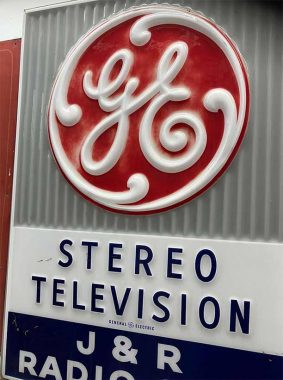
General Electric’s classic logo is one of the oldest ones in continuous use from its original design. It attained its present form about 1900. Very little change has been made over the years.
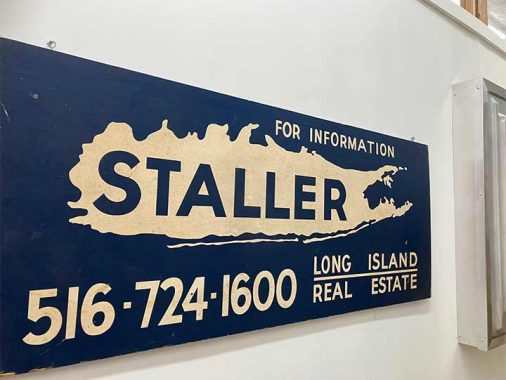
(Erwin) Staller and his father Max Staller, started working in commercial real estate in the 1950s. Together they developed some of the first shopping centers on Long Island, which were anchored by a supermarket, drug store and a U.S. Post Office. Over the next 30 years, the company prospered and the two men developed numerous shopping centers as well as office buildings and industrial buildings across Long Island and Connecticut. [Long Island Buisness News]
Erwin Staller passed away in 2019 at age 97.
Note that the logo depicts Long Island but without Brooklyn and Queens.

Broadway Medical Plaza, #341 Hart Street, corner of Broadway in Bedford-Stuyvesant, is still there, but now has a newer sign.
[Thanks to Mary Beth Henry on this page. I was leery about the building’s steep staircase, which is especially tricky on my sensitive lower back when descending; so Mary Beth went upstairs and got several photos from the second floor.]
As always, “comment…as you see fit.” I earn a small payment when you click on any ad on the site. Take a look at the new JOBS link in the red toolbar at the top of the page on the desktop version, as I also get a small payment when you view a job via that link.
10/27/24

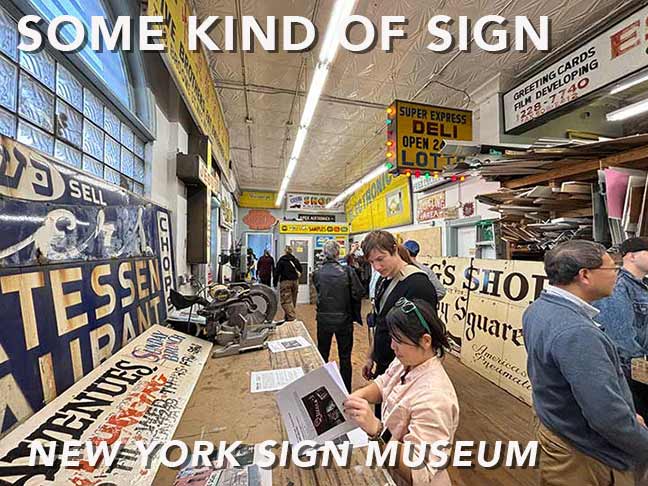
8 comments
There used to be a little sign painters supply store on Bowery near
7th st. which was still in business at least into the ’70s.I wished I had
stopped in and had a look around in it.I bet they had the kind of brushes
that no art supply had even heard of.
“Sign, sign, everywhere a sign…”
SOMEBODY, QUICK, CALL MIKE WOLF
Las Vegas’ Neon Museum has an unusual pricing structure. As it’s outdoors, and most/all of the signs still work, it’s more money ($35 vs. $25) to visit it at night when the signs are illuminated.
Very insightful, fact-packed, gracefully rendered profile of the Sign Museum, showing how its collection of vintage NYC signage reflects the businesses and history of the city. It all made me feel very nostalgic!
Good history of General Electric “Meatball” logo here: “The Initials of a Friend”: A History Of GE’s Iconic Monogram Logo | GE News https://share.google/pFjJjmu1drsfE2mde
This is the first time I’m hearing about a sign museum in NYC and it’s probably not known to most especially for having such a location.
Really enjoyed this one!